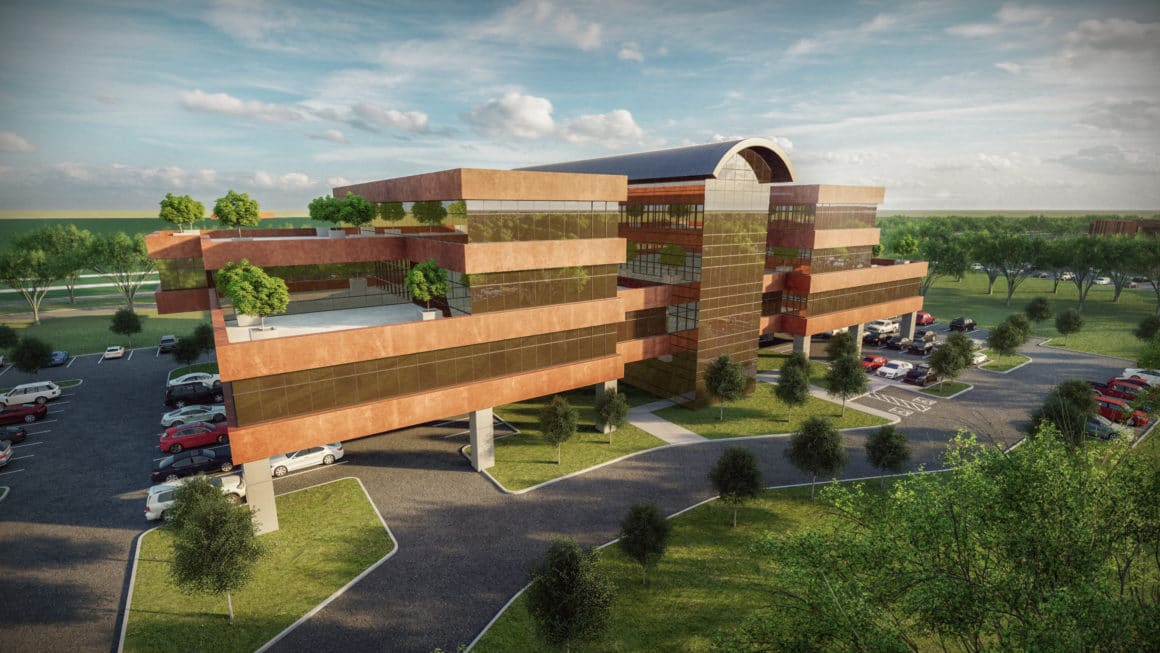This article is part IV of a series to offer some more context around each strategy – stabilization, value-add, new construction, and master-planned development. We’ll summarize the general business plan for each, discuss the opportunities and risks, and define the investor profile that may be suitable for each strategy.
This article focuses on the Master Planned Development strategy.
The Original Master Planned Community
CaliberCos is headquartered in beautiful Scottsdale, Arizona. For decades, the so-called ‘Five Cs’ have powered Arizona’s economy – one of which is citrus. If you’ve never visited, citrus trees are abundant around the Valley. You’ll find grapefruit, lemon, orange, and lime trees lined up and down the streets and dotted in backyards everywhere.
Citrus trees demand water, attention, and patience: the average citrus tree takes five years or longer before it will bear fruit. However, once you get it to flower, citrus trees offer a consistent and bountiful yield. You may even see signs advertising ‘free fruit’, which is common throughout the Valley.
The Valley is not a water-rich environment naturally. The modern irrigation infrastructure is based on the ancient Native American canal system discovered when settlers began populating the area in the 1800s. Archaeologists date the ancient canals to around AD 600, making them the oldest irrigation system in the United States. At that age, that means these canals were dug by hand without the benefit of modern survey instruments, machinery, or wheeled vehicles.
The ancient Native Americans used the canals to turn the arid Arizona landscape into a livable area flush with water. It’s the original master-planned community.
While the technology has dramatically improved, the strategy remains unchanged: identify land with attractive fundamentals, then develop it to attract and retain homeowners and businesses.
Like citrus trees, Master Planned Developments take time to complete but can offer a consistent and bountiful yield for investors once the project is finished.
Let’s walk through some of the high-level points in the Master Planned Development business plan.
Identify land with attractive fundamentals
Executing a Master Planned Development requires vision: you need to see how the community could look on raw, undeveloped land, often adjacent to the urban core. It may not even have developed roads leading to the proposed site. For this reason, it helps to look for opportunities around growing cities with attractive demographic trends and business-friendly climates. For instance, the Sun Belt states – like Arizona, Texas, Florida, and North Carolina – fit this profile.
Entitled property is easier to value using comparable properties in the market than unentitled, raw land. An entitlement is a set of approvals the local city or county government asks developers to go through that authorizes the developer to use the land to build what they want. Some common entitlements include a use permit, site plan approval, architectural design approval, utility approval, and road approval. Entitlements keep the local government aligned with the developer’s plans for the land.
Even if it’s still a patch of dirt, entitled land is easier to value than unentitled land because the developer has declared what they intend to do with it. Unentitled land means it can be used for any development. As a result, the value of unentitled land can swing wildly as adjacent developments progress.
Property value is determined by its highest and best use. Land that could be used for a suite of medical offices could be more valuable than a swath of single-family homes, depending on the area. Generally, there is more profit in commercial buildings than single-family homes. Fortunately, we get both in a master-planned development. When we entitle the land, we’ll declare to the local authorities our intent to build homes and retail space on the land.
Develop entitled land
Development costs vary dramatically from city to city and are influenced by current supply and demand dynamics. To account for these variables, Caliber prefers to pursue projects in areas we’re familiar with and with partners we trust. That way, we can better control the hard and soft costs associated with a master-planned development.
Hard costs are anything that contributes to the construction of the structure itself; so, things as labor, lumber for framing or copper for utility lines, and concrete for foundations. Soft costs are architectural and engineering fees, legal fees, pre- and post-construction expenses, permits and taxes, insurance, etc.
Please read our article covering the new development strategy to learn more.
Attract homeowners and businesses
We’re dealing with many hectares of land in a master-planned development, so we’re not going to develop it all at once. We need to steadily increase the value of the land, even if it’s entitled, by generating demand.
Commonly, we’ll start by finding a homebuilder to create residential neighborhoods. Securing a homebuilder for a portion of the land creates demand for commercial properties, like grocery stores, dining options, and retail shopping. The presence of a neighborhood and commercial amenities attract more homebuilders, whom we can market parcels of land at a higher price.
Demand for amenities increases as the population grows, giving the developer pricing power and control over the supply and demand dynamics of the area. While this cycle of attract-build-grow can take years to play out, the developer retains control the entire time, which can mean potentially excellent returns for their investors.
Exit strategy
Master-planned developments take years to go full cycle, often going ten years or more. It takes time to entitle the land to then attract a homebuilder and begin the steady building out of the community.
Institutional investors including those who oversee pension plans, endowments, and insurance companies typically have an appetite for low-risk cash-flowing assets. This strategy continues to go strong as interest rates remain at historic lows.
As a result, demand for components of the mature master-planned development is high amongst these investors. As the developer, we retain control over the entire community, putting us in the driver’s seat to potentially generate attractive returns for our investors by picking when and how much of the community we elect to sell.
Who is a master-planned development strategy right for?
A master-planned development can take years to go from a patch of dirt to a thriving community. Fortunately, there are multiple entry points for investors that can help align their risk tolerance to their desired returns. For example, investors with a higher risk tolerance seeking a return on equity could invest during the entitlement phase.
Investors with a moderately aggressive risk tolerance who prefer a blend of cash flow and return on equity could invest after homes have begun to sell and are seeking commercial development for the community.
Conservative investors who prioritize cash flow could invest once the community has matured and we’re seeking to improve existing amenities to increase the land’s value.
No master-planned development in Arizona would be complete without citrus trees to beautify the area. To get there, we take a careful and curated approach to developing the land from an arid desert to an attractive place for families and businesses to thrive. As an investor, master-planned developments demand some patience, but the final yield of often worth the wait.

About Caliber
As the Wealth Development Company, we are a leading U.S. sponsor with approximately $500 million in assets under development and management. These investments are comprised of alternative investments, which include private funds and syndications, externally managed real estate investment trusts (REITs) as well as public funds.
We conduct substantially all business through our Sponsor, CaliberCos Inc., a vertically integrated platform that is strengthened by more than 70 professionals with decades of institutional experience in commercial real estate, capital markets, alternative investments, and mergers and acquisitions.
We allocate our alternative investment strategies and align them with investors’ investment objectives, risk profiles and liquidity preferences to offer an optimal balance of risk-adjusted returns and attractive investment performance. It is because of this thoughtful, intentional approach, and our unwavering pursuit of performance, that we have been deemed The Wealth Development Company.
We strive to build wealth for investors by offering a diverse host of investment solutions that fit our investors’ needs. With a primary focus on key middle-market growth areas, such as Arizona, Colorado, Nevada, Texas, Utah and Alaska, we evaluate other U.S. markets that possess the same attractive demographics and macroeconomic trends as our targeted markets, such as highly skilled labor, emerging population and job growth. In addition, we utilize our institutional full-service operating platform to generate operating efficiencies while enhancing the value of our investments through dedicated asset management strategies.
We create value through a combination of internal and external growth channels. Bringing together the benefits of real estate, deep asset-class, and capital markets expertise across public and private investments.
We seed, develop, and manage a broad range of liquid and illiquid alternative strategies for a diverse group of investors who comprise approximately a $4 trillion alternative investment market, which includes high net worth, accredited and qualified investors, as well as family offices and smaller institutions. This strategy allows us to opportunistically compete in an evolving middle-market arena for alternative investments that range between $5 million and $50 million.
Click here to see Caliber’s current property portfolio.
Contact Caliber at [email protected] to learn more about their investment portfolio.
